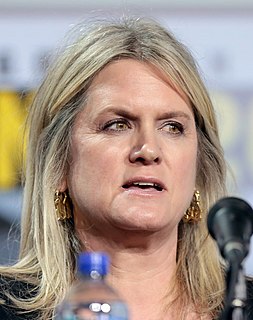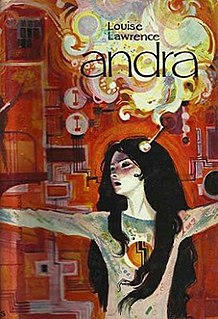Related Research Articles

Science fiction first appeared in television programming in the late 1930s, during what is called the Golden Age of Science Fiction. Special effects and other production techniques allow creators to present a living visual image of an imaginary world not limited by the constraints of reality.

The Starlost is a Canadian-produced science fiction television series created by writer Harlan Ellison and broadcast in 1973 on CTV in Canada and syndicated to local stations in the United States. The show's setting is a huge generational colony spacecraft called Earthship Ark, which has gone off course. Many of the descendants of the original crew and colonists are unaware, however, that they are aboard a ship. The series experienced a number of production difficulties, and Ellison broke with the project before the airing of its first episode.

Thames Television, commonly simplified to just Thames, was a franchise holder for a region of the British ITV television network serving London and surrounding areas from 30 July 1968 until the night of 31 December 1992. It was also a production company. Thames Television broadcast from 9:25 Monday morning to 5:15 Friday afternoon at which time it would hand over to LWT. It continued as an independent production company until 2003.

Television in Australia began experimentally as early as 1929 in Melbourne with radio stations 3DB and 3UZ, and 2UE in Sydney, using the Radiovision system by Gilbert Miles and Donald McDonald, and later from other locations, such as Brisbane in 1934.

Jane Tranter is an English television executive who was the executive vice-president of programming and production at BBC Worldwide's Los Angeles base from 2009 until 2015. From 2006 to 2008, she was the BBC's controller of fiction; in this capacity she oversaw the corporation's output in drama and comedy, as well as films and programmes acquired from overseas, across all BBC TV channels. Critics were concerned that the BBC had invested too much creative power in one person, and following Tranter's move to the United States, the position of controller of fiction was abolished and the responsibilities divided up among four other executives.
U.S. television science fiction is a popular genre of television in the United States that has produced many of the best-known and most popular science fiction shows in the world. Most famous of all, and one of the most influential science-fiction series in history, is the iconic Star Trek and its various spin-off shows, which comprise the Star Trek franchise. Other hugely influential programs have included the 1960s anthology series The Twilight Zone, the internationally successful The X-Files, and a wide variety of television movies and continuing series for more than half a century.

Deborah Jane Mailman is an Australian television and film actress, and singer. Mailman played the character Kelly Lewis on the Australian television series The Secret Life of Us and Cherie Butterfield in the Australian comedy/drama series Offspring. She portrayed the role of Lorraine in the Australian TV series Redfern Now and Aunt Linda in the television program Cleverman. Mailman is the main character in the Australian TV series Total Control.

The Incorporated Television Company (ITC), or ITC Entertainment as it was referred to in the United States, was a British company involved in production and distribution of television programmes.
Phoenix Five is an Australian science fiction television series which first screened on the ABC in 1970. It was later also screened on the Seven Network. It was part of a trilogy and followed on from the six part serial The Interpretaris in 1966 and seven part serial Vega 4 in 1968. However, it had 26 standalone episodes produced to make it viable as a syndicated series. Each of the series had different crews and casts but took place in the same future and used the same space organisation and miniatures, much as Star Trek did in the '80s and '90s, thus making it the first TV sci-fi franchise.

Andra is a 1971 science fiction novel, the first novel by English writer Louise Lawrence.
ABC Television is the general name for the national television services of the Australian Broadcasting Corporation (ABC). Until an organisational restructure in 2017/2018, ABC Television was also the name of a division of the ABC. The name was also used to refer to the first and for many years the only national ABC channel, before it was renamed ABC1 and then again to ABC TV.
British television science fiction refers to popular programmes in the genre that have been produced by both the BBC and Britain's largest commercial channel, ITV. The BBC's Doctor Who is listed in the Guinness World Records as the longest-running science fiction television show in the world and as the "most successful" science fiction series of all time.
This timeline of Australian television lists important station launches, programs, major television events, and technological advancements that have significantly changed the forms of broadcasting available to viewers of television in Australia. The history of television in Australia can be traced back to an announcement from the Menzies' government concerning plans for television services in Sydney and Melbourne.
The year 1999 in Australian television involved many events.
Michael Carson was an Australian television director who was responsible for some of Australia's most significant series in the last decades of the twentieth century. His work as a director, producer and script editor was recognised with AFI Awards, Logie Awards, Penguin Awards and AWGIE Awards.

Andrew John Hansen is an Australian comedian, musician and author, best known for being a member of satirical team The Chaser. As a member of The Chaser, Hansen's television work includes co-writing and starring in ABC Television shows CNNNN (2002–2003), The Chaser Decides, Chaser News Alert (2005), The Chaser's War On Everything, Yes We Canberra! (2010), The Hamster Wheel (2011–12), The Hamster Decides (2013) and The Chaser's Media Circus (2014–2015). He was a producer and regular panellist on The Unbelievable Truth (2012). He has also co-written and performed in The Chaser's stage shows, Cirque du Chaser (2005) and The Chaser's Age of Terror Variety Hour (2008). With Chaser colleague Chris Taylor, Hansen starred in a scripted radio comedy series on triple j titled The Blow Parade, which was released on CD and the iTunes Store.
Regulations on television programming in Australia are enforced by the Australian Communications and Media Authority to promote programming which reflects Australian identity and cultural diversity. Commercial networks must adhere to content quotas of Australian programming, in the categories of Australian content quotas, children's content quotas, commercial broadcasting quotas, community broadcasting quotas, public broadcasting quotas and subscription television quotas. Regulations are based on the Broadcasting Services Act 1992.